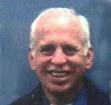Friday, August 31, 2007
Greater processing power through arrays of closely couple processors
Thursday, August 30, 2007
Countermeasures to the bullet deflector
Wednesday, August 29, 2007
The bullet deflector
Tuesday, August 28, 2007
The intelligent, powered exo-skeleton
Monday, August 27, 2007
People building
Sunday, August 26, 2007
Powered exoskeletons
Friday, August 24, 2007
The "full up" 420 can reach 300 kph
Thursday, August 23, 2007
I am looking for a suitable red sporty car photograph
Wednesday, August 22, 2007
Disk space
Tuesday, August 21, 2007
Wargamer's fantasy
Monday, August 20, 2007
We could make the best naval wargame
Sunday, August 19, 2007
Why us?
Saturday, August 18, 2007
The whole question of security
Friday, August 17, 2007
Cars
Thursday, August 16, 2007
What I would like to do, but don't know how to make it work
Wednesday, August 15, 2007
Research with the Grid is necessarily very computing intensive
Tuesday, August 14, 2007
Just because the Grid exists, that does not eliminate crime and terrorism
Monday, August 13, 2007
A feature of modern life, in the Grid world
Sunday, August 12, 2007
The Grid makes life difficult for Islamic radicals and common criminals
Saturday, August 11, 2007
Time travel
Thursday, August 09, 2007
Language changes
Tuesday, August 07, 2007
Doing our homework
Monday, August 06, 2007
We need to record audio, as well
Sunday, August 05, 2007
Wondering about the opening shots in the war
Saturday, August 04, 2007
Preparations for a data collection run with the Grid
We decided that we would make our first data collection run on 29 May 1652, off Dover the Downs. We would watch and record the events that lead to the outbreak of the First Anglo-Dutch War. We should be able to confirm that the Dutch flagship Brederode fired a broadside a Robert Blake's flagship James after Blake had fired a round completely through the Brederode, taking the arm off one man in the process. Blake had ostensibly fired a "warning shot" to remind the Dutch that they were supposed to salute by dipping their flags and topsails. For the shot to have gone through the Brederode probably meant that it was from a 32pdr demi-cannon on the lower tier of the James.
We had precalculated the coordinates that should place us over Dover, looking down in early 29 May. We would then adjust to get a better view and position in the temporal axis. We would then capture a quick overall all view and then take 3D models of the ships, Dover castle, and the gun emplacements on the shore. We needed to get the particulars of how each was armed. For the ships, we needed to go into the ship and grab images of papers, including log books, or whatever they had. We needed to find papers that would allow us to confirm the name of each ship and as much as we could find about the crew and provisions.


